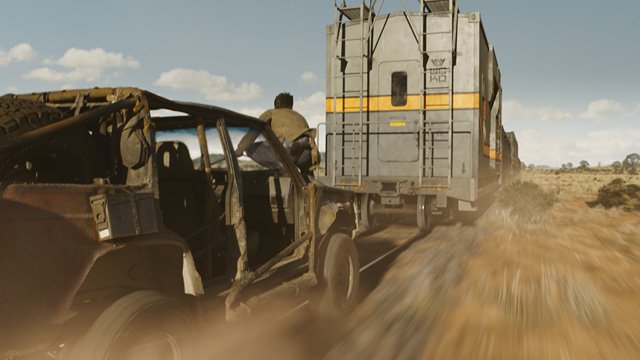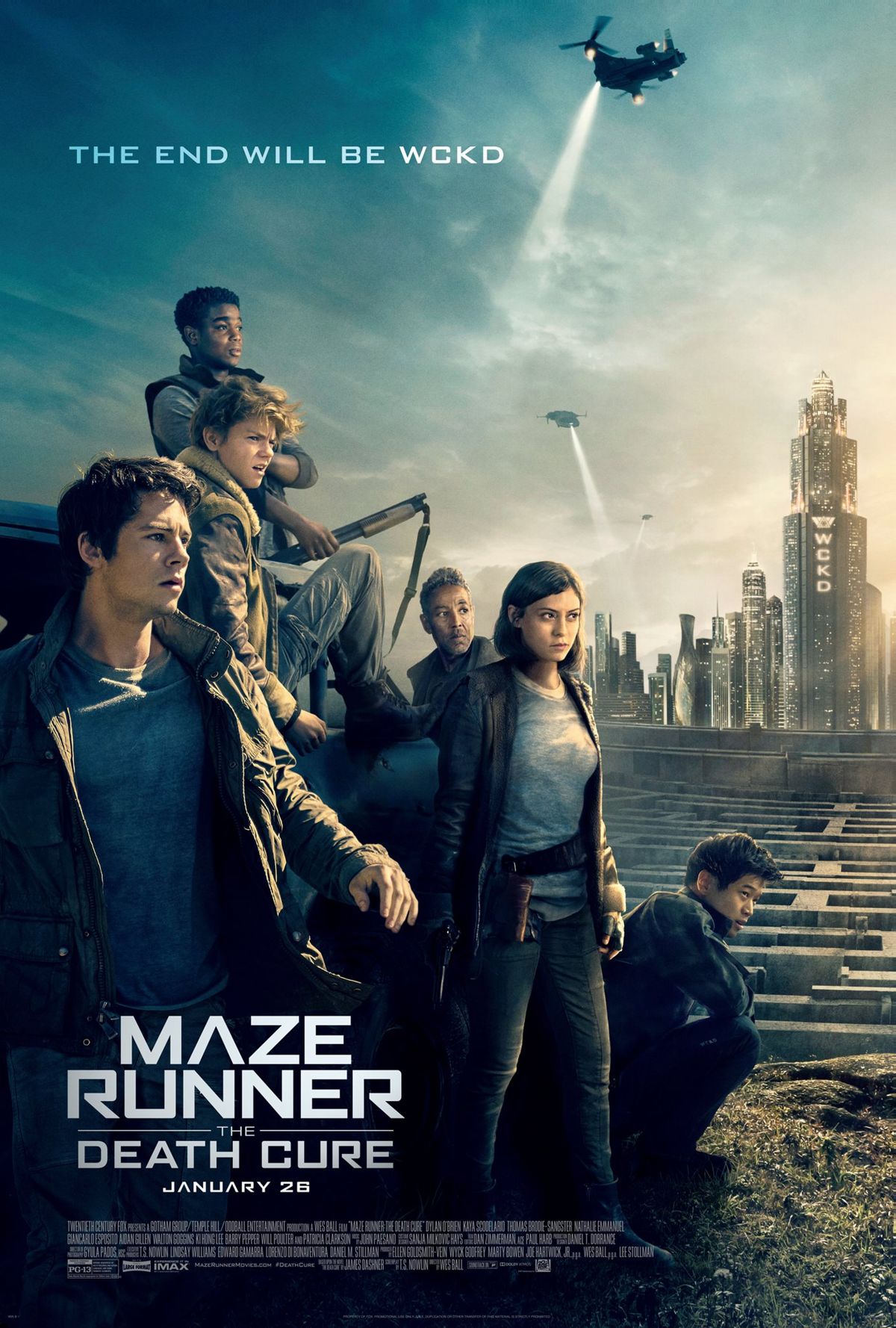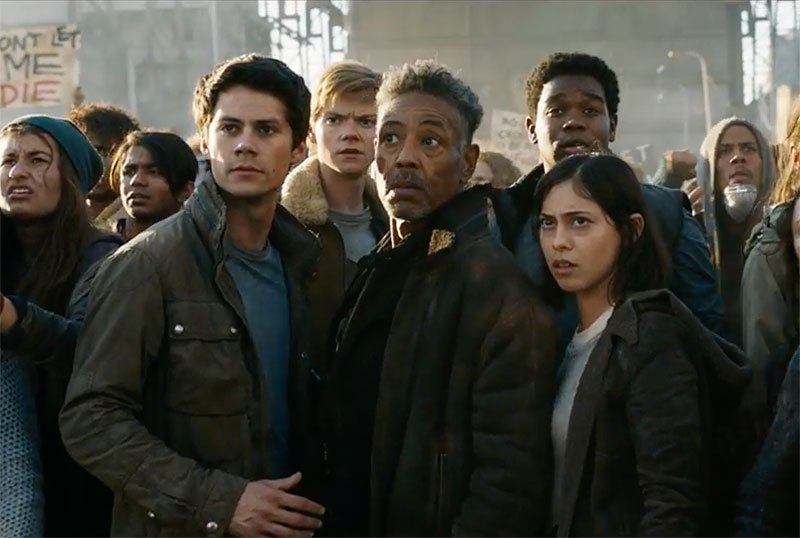Now that 20th Century Fox has released both Maze Runner: The Death Cure and the complete Maze Runner Trilogy on Blu-ray, ComingSoon.net took the opportunity to chat 1:1 with director Wes Ball, who gave us his thoughts on completing the epic YA series as his first three films!
RELATED: Exclusive: Wes Ball Talks His Vision for the Mouse Guard Movie!
In the epic finale to the Maze Runner saga, Thomas leads his group of escaped Gladers on their final and most dangerous mission yet. To save their friends, they must break into the legendary Last City, a WCKD-controlled labyrinth that may turn out to be the deadliest maze of all. Anyone who makes it out alive will get answers to the questions the Gladers have been asking since they first arrived in the maze.
As with the previous two movies in the franchise, Maze Runner: The Death Cure is directed by Wes Ball from a screenplay by T.S. Nowlin, adapting the YA novels of James Dashner. It follows the events of 2014’s The Maze Runner and 2015’s Maze Runner: The Scorch Trials, and stars Dylan O’Brien, Kaya Scodelario, Thomas Brodie-Sangster, Ki Hong Lee, Giancarlo Esposito, Aidan Gillen, Barry Pepper, Will Poulter, and Patricia Clarkson.
Click here to purchase the complete Maze Runner Trilogy on Blu-ray!

ComingSoon.net: I want to start off by saying congrats on sticking the landing with this trilogy. It’s kind of fascinating to me that we’ve seen a lot of YA franchises fizzle out recently, whether it’s “Mockingjay” or “Divergent,” yet worldwide the “Maze Runner” movies very quietly and cost effectively made close to a billion at the box office. Why do you think it’s been so quiet and more press aren’t touting the success?
Wes Ball: We’ve always been kind of a punching bag. We’ve always been kind of the unwanted step-sister of “The Hunger Games.” That might be why. I dunno, man, it’s hard to say. It’s always surprised me a little bit, but it is what it is. The good thing is the fans of the movies, that really love the movies, it’s really fun to be a part of that experience. I can only hope that ten years from now people will still think about it or watch it. There are kids who grew up on these movies, like I did watching “Goonies” or “Raiders of the Lost Ark” or “Back to the Future” or “Star Wars.” I still watch those movies because they were important to me when I grew up. They touched on something I enjoyed, and that’s what we tried to do here. We didn’t try to just make another YA thing. You’re right, though, and if you factor in inflation I think we’re almost at a billion dollars. It’s like, “Ugggh, all we needed was $50 million more to make a billion dollars and that would have been awesome.” First world problems, I guess.
CS: Was there anything you gleaned from other YA franchises as sort of landmines to avoid and ways to keep it as fresh but consistent as you did?
Ball: Honestly I didn’t watch them. I don’t even know if I’d seen the first “Hunger Games” movie when I was making the first one. I was aware of “Twilight.” I had “Goonies” in mind, or “Lord of the Flies.” I had these other movies that I had grown up on, and was hoping that someone out there would feel that we weren’t trying to be the next “Hunger Games” or “Divergent.” Obviously I’m aware when people say, “Oh you don’t have the love trio” and this and that. Also the conceptual idea of that first movie was it was more of a “Twilight Zone” episode than it is some kind of YA thing. It’s a unique situation to find yourself in a giant maze and then find your way out. At its core it’s a cool conceptual idea. The books don’t have that, necessarily, but what they do have is those time-tested characters and we get to kind of witness their story as it changes all the way through to the end. We did our best to turn those books into movies as well. I think they’re very different from those movies, but hopefully they have a kind of reverence to past movies that I’d grown up with in the ’80s and ’90s.
CS: So I’m not interested in rehashing the accident, but something I’ve been curious about was if you were able to use a lot or all of the footage you shot prior to the accident or if it was a total start-over situation?
Ball: We only got three days into that shoot. So essentially what you see is about eight shots that made it into the movie, and most of them were aerial shots. (laughs) We had shot in Vancouver, and Vancouver and South Africa are COMPLETELY different, but there are a few shots in the visual effects aspects of the train sequence. On the Blu-ray you’ll see the whole train sequence but two different versions of it side-by-side, which is the VFX plate and the actual finished shot. So you’ll see there’s a couple finished shots in there where we had to just completely replace the entire background. It doesn’t look anything like South Africa, but that’s kinda cool that it’s a totally photo real environment where you don’t know it’s an effects shot. It was cool, it was fun to do, and there was one particular shot that was really important to me to keep which was one of the shots he got hurt doing. That’s still in the movie, but for the most part it’s all redone, so that was unfortunately money that just got thrown away which is a terrible thing, but we all got back on the horse.

CS: So you only shot for three days?
Ball: Yeah. Two-and-a-half, to be honest.
CS: Well that’s not too much that got thrown out then.
Ball: It kind of is, because the thing people don’t know about our movies is we’re small movies. In two days I’d shot half the train sequence by then! I shot that train sequence in five days in South Africa, so two days is millions and millions of dollars that got potentially thrown away. On another movie you’d get a couple shots that day. We had to get 30 shots a day, and Vancouver was beautiful and the shots we got were beautiful, it just didn’t look anything like where we ended up in South Africa.
CS: There are certainly much crazier overhauls that have happened, like “Back to the Future” famously shot for six weeks and started over again.
Ball: Yeah, and having seen some of that footage that would not have worked. I mean, I like Eric Stoltz as an actor but he’s nothing like the Marty McFly we all grew up on. There’s a tone that movie needed, and it just shows you how fragile movies are. One little thing could be different, and it’s not just about story, it’s not about spectacle, it’s not about actors, but all those things that have to come together perfectly to make magic. It’s almost scary thinking about how fragile a movie is, you know?
CS: What was the high point for you personally and creatively throughout the entire making of the trilogy?
Ball: That’s a tough question. Obviously it’s my first three movies. The fact that I stuck with the entire trilogy is kinda rare, but the fact that my first three movies as a director were all centered around this one story. I can’t go back to watch the movies, because I think of all the things I’d like to change, that’s the curse of being a perfectionist I guess, but there’s some aspect of being a craftsman as you go to each movie. Its been fun to do that in an environment of comfort, where the studio is trusting what we’re doing. The cast is all the same for the most part, so it was a safe environment for those subsequent movies. It’s been a helluva journey the last five years doing these movies. The book sales are a fraction of what “The Hunger Games” are, but the fans who do love those books they are crazy passionate. We do our best to give them what they’re asking for. Its been a great ride and now it’s behind me! I’m not looking back, I’m gonna make something else now.
Maze Runner: The Death Cure
-
Maze Runner: The Death Cure

-
Maze Runner: The Death Cure

-
Maze Runner: The Death Cure

-
Maze Runner: The Death Cure

-
Maze Runner: The Death Cure

-
Maze Runner: The Death Cure

-
Maze Runner: The Death Cure

Thomas (Dylan O’Brien), Newt (Thomas Brodie-Sangster), Cranks leader Jorge (Giancarlo Esposito), Frypan (Dexter Darden) and Brenda (Rosa Salazar). Photo credit: Courtesy Twentieth Century Fox
-
Maze Runner: The Death Cure

In the epic finale to the Maze Runner saga, Thomas (Dylan O’Brien), with Newt (Thomas Brodie-Sangster), leads the group of escaped Gladers on their final and most dangerous mission yet. Photo credit: Courtesy Twentieth Century Fox
-
Maze Runner: The Death Cure

Teresa (Kaya Scodelario) and Ava Page (Patricia Clarkson) look pensive. Photo credit: Courtesy Twentieth Century Fox
-
Maze Runner: The Death Cure

Thomas (Dylan O’Brien), Jorge (Giancarlo Esposito), Frypan (Dexter Darden), Newt (Thomas Brodie-Sangster) and Brenda (Rosa Salazar) are in search of answers. Photo credit: Joe Alblas
-
Maze Runner: The Death Cure

Thomas (Dylan O’Brien) and Newt (Thomas Brodie-Sangster) face constant danger in their quest for freedom and answers. Photo credit: Joe Alblas
-
Maze Runner: The Death Cure

The group decides on their next move. (L-R) Sonya (Katherine McNamara), Harriet (Nathalie Emmanuel), Aris (Jacob Lofland, back to camera), Newt (Thomas Brodie-Sangster), Thomas (Dylan O’Brien), Brenda (Rosa Salazar), and Frypan (Dexter Darden). Photo credit: Joe Alblas
-
Maze Runner: The Death Cure

Thomas (Dylan O’Brien) and Newt (Thomas Brodie-Sangster) debate what to do, while Jorge (Giancarlo Esposito) watches. Photo credit: Joe Alblas










